Surprise! I’m Going to Asia Tomorrow
When the festivities of Mardi Gras are over and the Siberian freeze descends upon the southern United States for weeks at a time, I’m reminded how much I despise winter. It’s time to get the heck out. Fortunately, I have a pile of airline miles that I’ve been sitting on for YEARS, and work is a bit slow at the moment…so, I spent most of last week battling with US Airways’ horrific call center to book a last-minute award flight to Southeast Asia! The Plan I’m usually not usually a fan for having a detailed itinerary before I land in a new country, but I’ll be honest, Asia has three factors that put me on edge: zillions of people, traffic, and pollution. Given these factors, I’m trying to keep my 25 days there as structured as possible. (Be prepared to laugh at how much of the following itinerary is up in the air.) Stop 1: Thailand I have at least two days in Bangkok on my own, and have booked two nights in a swanky pod-styled hostel. It’s about a 1 minute walk to the SkyTrain, which is a huge plus as I’ll be staggering in at 7am after 20+ hours in flight via Qatar — I probably won’t be up for a lot of street navigating. (On average, I get lost for about an hour whenever I first arrive anywhere new, so I consider this a wise move.) I’m Doing A Group Tour (Let Me Remind Myself Why…) I’ve read several times that Thailand is one of the easiest countries to travel on your own (and Ukraine is a challenge?), but for the first time in my traveling career, I’m coughing up precious dollars and my pride in exchange for a 9-day group tour. Why? I know that things rarely happen on time in southeast Asia, buses are late and boats don’t always leave when they’re supposed to, and since this trip is nearly half as short than my previous solo international jaunts, I want to see what I want in the amount of time allotted, rather than lose days trying to master the transit system. This time, I’d rather pay someone a little extra to worry about that. So, I’ve hopped on a last-minute tour with G Adventures. I’ll join them for a 9-day southern sojourn of the beaches of Thailand, ending in Bangkok. I’ll also get to visit Alex‘s beloved Koh Tao, which I’m jazzed about after drooling over her photos for YEARS now. Stop 2: Vietnam After roughly two weeks in Thailand, I’ll spend the rest of my time in northern Vietnam (assuming my visa gets approved in time — I waited until Tet to...
Mardi Gras Tips for First Timers
Mardi Gras is my favorite time of year. I adore the week-long celebration– full of costumes, delicious King Cake, endless drinks…and with varying levels of debauchery, depending on your style and inhibitions. If you’re celebrating Fat Tuesday in New Orleans this year, here are a few tips! Get to the party early: Mardi Gras isn’t just one day of revelry. The Mardi Gras season begins on Twelfth Night, and it only builds from there: in the weeks preceding Fat Tuesday, there’s more and more parades and events that ultimately crescendos the weekend before. Some of the best Krewes roll the Thursday and Friday nights preceding Mardi Gras. Muses is a favorite among locals, and my personal favorite is Krewe d’Etat, which is a parade full of political satire — on a local and national level. krewe |kroo| noun. A private social club that sponsors balls, parades, etc., as part of the Mardi Gras festivities. Then there’s the Super Krewes: Endymion, Bacchaus, and Orpheus. These three are known for their high-tech floats, intricate design, and elaborate costumes — as a result, they draw enormous crowds. Get there early! Fun fact: Mardi Gras is privately funded by the members of the Krewes. The dues to join a Krewe are hefty, but it covers security, barricades, street sweepers, street closures, permits — and of course, all the “throws”. throws |THros| noun. Items one can catch at a Mardi Gras parade, including but not limited to: plastic beads, speciality beads, doubloons, cups, toys, light-up trinkets at night parades, plus Krewe-specific items (Coconuts from Zulu, Muses throws specialty shoes, toilet plungers at Tucks). Track the parades with WDSU’s Parade Tracker. I LOVE THIS APP. It provides you with all the information you need: Schedules, maps of parade routes, and even the chance of rain. Best of all, once the Krewe rolls, it tracks where on the route the parade is and keeps you updated if the parade is stalled somewhere on the route. The app really comes in handy when you’ve been waiting for thirty minutes after Proteus, wondering where the heck Orpheus is. WWL has a parade tracker app as well — but I prefer WDSU’s interface. BYOTP. Public toilets on parade routes are scarce, and toilet paper is even scarcer. Closer to downtown and the Quarter, hotels require their guests to wear bracelets in order to gain access to their lobby (and bathroom facilities). In Uptown, public restrooms are nearly impossible to find. The city created a new ordinance this year banning private port-a-johns on public property — making toilets even more of a scavenger hunt. There are port-a-johns on most major intersections, although their cleanliness leave a lot to be desired. Always have a few extra tissues (and hand sanitizer!) in your pocket. Get...
Traveler Threads: Living and Working in Antarctica at the South Pole
Antarctica. Rugged, mysterious, magnificent, daring….freezing. The last frontier. Most know it’s possible to visit the outlying edges of Antarctica as a tourist (and even run marathons), but it’s even more expensive and difficult to make it all the way to the center of the continent, the bottom of the world: the South Pole. I’ve read a few travel bloggers‘ accounts of traditional tours of Antarctica, but I had never heard of anyone hanging out at the South Pole — that is, until Luke Magolda’s Facebook location changed one day to Amundsen-Scott South Pole Station, Antarctica. As I watched a stream of photos of the frozen tundra appear on my news feed, I exploded with excitement, curiosity, and awe — and immediately inundated the poor guy with questions. He graciously agreed to share his story, and I’m very excited to launch the first installment of Traveler Threads, featuring Luke and his current occupation at the South Pole. How did you hear about the program? What made you want to work in Antarctica? Well, I found out about the job while I was working in Iraq as a contractor a few years back. I think I just found it intriguing that almost anyone could go to Antarctica and work. Antarctica has always fascinated me but I never thought I would be able to go there. A friend of mine worked here during the 2011-2012 season and he seemed to love it. I applied in 2011 and received an alternate position but never a primary spot. (An alternate position is basically just a backup in case a primary contract holder backs out.) Explain your job at the South Pole — what do you do? I work in logistics and supply. Most cargo that arrives or goes out of the station goes through us first. The supplies are inventoried in the computer database and delivered to the different departments around the station as needed. It’s a very diverse job being that we spend a lot of time both outside and in the office. Most tourists get to Antarctica via ship leaving from Ushuaia, Argentina. How did you get to the South Pole? The USAP deployment headquarters for the majority of people deployed to Antarctica is in Christchurch, New Zealand. I arrived in New Zealand last October and spent roughly 3 days there preparing and briefing for the trip. We had a 5 hour flight on a C-17 Air Force cargo aircraft from Christchurch to McMurdo Station. McMurdo Station is on the coast of Antarctica on the Ross Sea. I spent roughly 3 days in McMurdo before I took a flight on an LC-130 to the South Pole. The flight was...
Favorite Destinations of 2013
My wish for 2013 was to live the year out of a suitcase. When January 1st rolled around, I had zero plans of putting that into motion aside from a weekend jaunt to Memphis and two weeks in New Orleans for work and celebrating Mardi Gras. Then, in mid-February, it all began: I was swept off by a job to the West Coast, where I spent a grueling five months working and living out of a suitcase while doing my best to enjoy the adventure. Afterwards, I had a healthy bank account and weeks of unemployment on the horizon — I seized the opportunity and finally took off on the Motherland Tour. I was lucky enough to explore what became some of my all-time favorite destinations. And some (most) of these I still haven’t shared with you — so, here’s a little recap! 5. Kiev, Ukraine Kiev had three strikes against it: Cold, windy, gray, and in AUGUST! I would normally run to get on the next train out of town, but Kiev still won me over, and almost instantaneously. When I drove into the city and was greeted by the gigantic Motherland Statue and the Lavra — two landmarks that are so unique and unfamiliar to American eyes, it didn’t feel real. I really embraced Kiev for the stark contrast to the United States and the challenges that came along with it. It was also my first introduction to a Soviet city and I loved the wide roads, expansive parks, and dozens of monuments. As a fan of places with history and architecture older than the 1700s, Kiev has a lot to offer, especially regarding the early years of Christianity (legends suggest the apostle Andrew visited Kiev in 55 AD). There are quirks and challenges around every corner; curiosities and interactions with strangers that force you to think. Everything was in a different alphabet, and few people spoke English. It was the first time in my travels where I was in another world from the moment I arrived — and I loved it. 4. Bremen, Germany My roommate and I hosted two Germans back in 2010 — long before I ever planned the Motherland Tour and had done any research or had even looked at a map of Germany. Our surfers were from a place I’d never heard of: Bremen. They offered an open-ended invitation, but assured us it wasn’t worth any special effort to visit. A year later, I began plotting my Motherland Tour route and pouring over maps. I learned that Bremerhaven was the departure point where my grandparents left Europe for a new life in the United States....
Quintessential Ukraine: Tales from the Overnight Train
When I took my first overnight train from Kiev to Lviv, I was naive–maybe even stupid. No one in my cabin spoke English; I definitely spoke no Ukrainian. I didn’t understand why the bathroom door was locked when the train was stopped. In the morning, I was confused why the train attendant popped into our cabin four times within an hour and chirped at us before we finally rolled in to the Lviv train station at 6am. The cabin was sweltering hot, and I never got the tea that I had paid for. It had been an experience, but nothing I was keen on reliving. I promised I’d take the day train for the return journey. That had been a month ago. I was still riding high off the thrill of finding family in the most epic way imaginable. I’d spent the last week meeting/visiting several cousins all across Western Ukraine. The Motherland Tour had been a much larger success than I’d dreamed. I didn’t want to leave Lviv, but my roommate was meeting me in Germany that week, and she likely would’ve been irritated if I bailed in a brief Facebook message, “Sorry, I’m staying in Ukraine…but have fun alone in Germany!” (and rightfully so). I stalled as long as possible to visit with my delightful cousins (26 years is a lot of time to make up!), until I had no choice but to take the overnight train. I had to get back to Kiev. The Ukrainian Train Adventure I entered the cabin of my train in Lviv, where an older gentleman was curled up on one of the upper cots. He immediately sat up, and began chattering away in Ukrainian. At this point, I’d had a whopping three weeks of Ukrainian language study under my belt. Definitely not enough for conversation, but I could catch one or two words per sentence. I’d also become quite good at reading hand gestures and facial expressions. (If you ever need a teammate for a game of charades with Ukrainians, I’m your girl!) Through a combination of my limited Ukrainian and body language-reading abilities, I learned the gentleman was a professor from the city of Ivano-Frankivsk; and for about half an hour, he sat and spoke to me in slow, clear Ukrainian. Through a combination of charades, my bad Ukrainian, and Google Translate, I told him that I worked in television production and was here visiting family. He was delighted, and explained his daughter had a similar career. He eagerly asked me the English word for a few things — which I was surprised to be able to translate. I wondered if I was the first American he’d...
A Walk Through the Ukrainian Village of Rozvadiv
Rozvadiv is an unassuming village in West Ukraine, located 45 minutes south of Lviv and home to only 5,000. This could be considered “Quintessential Ukraine”: endless fields, livestock roaming through the neighborhoods — and the only sound is the hum of the river Dniester and rumbling of the occasional train. I enjoyed my weeks in Kiev and Lviv immensely, but I didn’t feel I truly experienced Ukraine until I took a walk through Rozvadiv. When Hitler marched Eastward through West Ukraine, Rozvadiv didn’t remain untouched. Nazi soldiers passed through, kidnapping teenage boys — one of whom was my grandfather. It has been left largely as it was after the USSR collapsed, save a few exceptions: a few more automobiles and satellite dishes; plus a fresh coat of paint on the main cathedral. The cathedral could be described a Rozvadiv’s the main attraction, which is impossible to miss from almost any place in the village. Since the crumbling of communism, finding employment and maintaining survival in these villages has been tricky. Most homes have beautiful, elaborate gardens and some form of livestock. I was surprised to learn that while several have cell phones and electricity, few have indoor plumbing. Rozvadiv has its own school, government office, and a pair of product shops, but no options in the way of eateries or restaurants. (When I went out to lunch with my family, we went to the neighboring town of Mykolaiv, which has three times the population and a larger array of businesses and employment opportunities). Perhaps it was Soviet influence, but Ukraine loves their larger-than-life monuments — and Rozvadiv is no exception. I first saw this dramatic angel statue in my grandfather’s 1992 video of Ukraine, and for one reason or another, he had edited into the Lviv portion of the video. I assumed it was in Lviv, and that it would be one of the main tourist attractions. I asked every local I met, “Where is the giant angel statue?!”, only to be answered with bewilderment. I eventually gave up, figuring the statue had been demolished. When we turned the corner of the main street in Rozvadiv, there it was. I gasped with surprise. It was even larger in person than I’d imagined. The River Dniester The Dniester is one of Ukraine’s main waterways, and it was also a place of joyous childhood memories for my grandfather– happier days that his years of torment under the Nazi regime couldn’t erase. I took the soil in my hands, and imagined my grandfather fishing, swimming, horseplaying here — and how everything he loved was taken from him in a moment. And then I think...

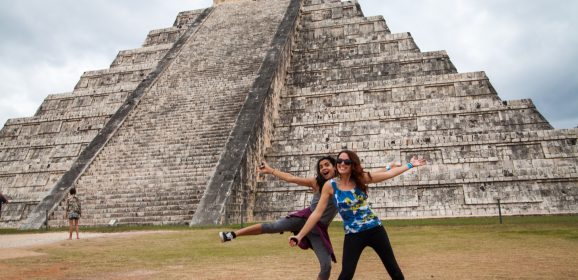
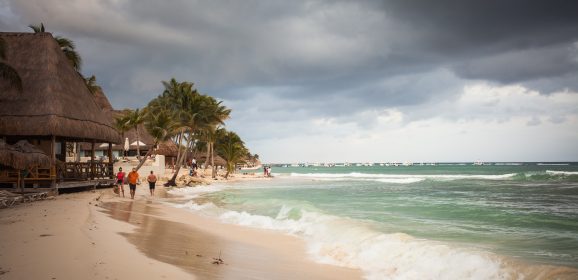
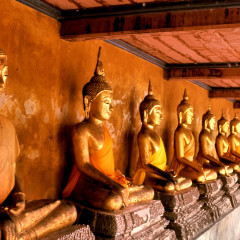



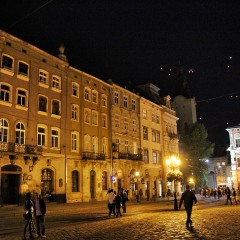
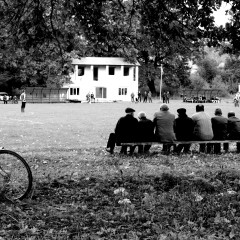
 I'm Laryssa, and when I'm not working in film or television, I'm attempting to travel -- or I'm here, providing resources for working in film or travel.
I'm Laryssa, and when I'm not working in film or television, I'm attempting to travel -- or I'm here, providing resources for working in film or travel. 









